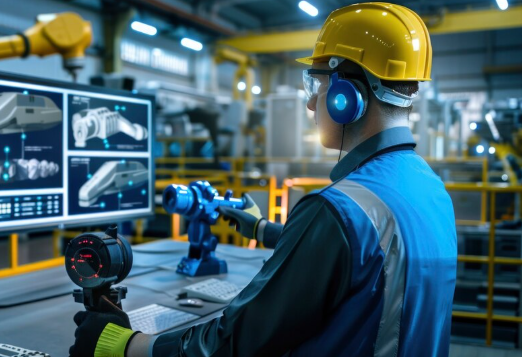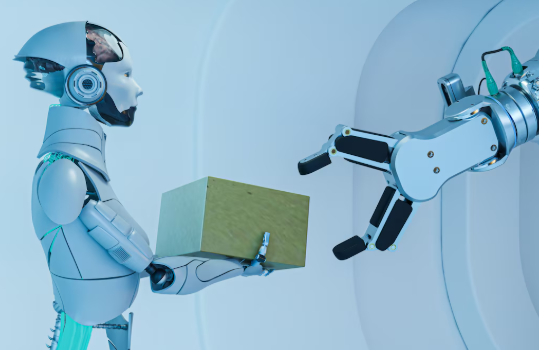In the age of AI innovation, the convergence of data science and artificial intelligence, AI for enterprise, and immersive digital experiences is setting the foundation for the next technological frontier — neuromorphic computing. Designed to emulate the brain’s neural architecture, neuromorphic computing introduces a leap in AI efficiency, adaptability, and power consumption. As organizations seek to create more intelligent, sustainable systems, neuromorphic technologies promise to redefine the limits of what’s possible.
At the heart of this transformation, companies like STL Digital are pioneering real-world AI applications and helping businesses unlock next-generation solutions driven by intelligent infrastructure and computing models like neuromorphic systems.
What is Neuromorphic Computing?
Neuromorphic computing is a hardware and software paradigm that mimics how the human brain processes information — using spiking neural networks (SNNs) instead of traditional binary logic. Unlike conventional computing that separates memory and processing, neuromorphic systems integrate both, enabling faster computation and lower energy usage.
This innovative approach is particularly important as the cost and energy demands of modern AI innovation continue to grow. Traditional AI models often require massive amounts of data, processing power, and time. Neuromorphic computing, inspired by the efficient and parallel structure of the human brain, offers a radical shift that could allow AI systems to learn in real time and respond dynamically to new inputs — the way humans do.
Intel’s Game-Changing Neuromorphic System: Hala Point
According to Intel, the global leader in chip innovation has built Hala Point, the world’s largest neuromorphic system. Utilizing Intel’s Loihi 2 processors, Hala Point boasts 1.15 billion neurons — roughly equivalent to an owl’s brain — and is designed to support scalable, energy-efficient AI workloads.
“The computing cost of today’s AI models is rising at unsustainable rates,” says Mike Davies, Director of Intel’s Neuromorphic Computing Lab. “Hala Point combines deep learning efficiency with novel brain-inspired learning.”
The Hala Point system demonstrates over 20 peta operations per second (petaOPS) and operates with efficiencies exceeding 15 trillion operations per second per watt (TOPS/W). This outpaces many existing GPU- and CPU-based architectures and opens the door for real-time continuous learning in AI — a game-changer for AI for enterprise.
Intel’s deployment of Hala Point at Sandia National Laboratories is set to fuel research in fields like device physics, smart infrastructure, and scientific computing, demonstrating that neuromorphic systems aren’t just theoretical — they’re shaping real-world applications in commercial, defense, and scientific domains.
Why Neuromorphic Matters for AI Innovation
The scaling up of deep learning models — especially large language models (LLMs) with trillions of parameters — has led to unsustainable energy consumption and slowed inference. Neuromorphic computing solves these bottlenecks by enabling:
- Ultra-low power consumption: Ideal for edge devices and mobile AI systems.
- Real-time continuous learning: AI systems that adapt without retraining from scratch.
- High adaptability and speed: Perfect for applications requiring fast, intelligent decision-making.
These advantages are not just theoretical. Loihi 2, Intel’s neuromorphic chip powering Hala Point, has demonstrated orders-of-magnitude improvements in speed, efficiency, and adaptability in various workloads, particularly edge-AI deployments.
Neuromorphic computing’s role is becoming central to delivering scalable digital experiences that go beyond automation — creating personalized, intelligent, and context-aware user interactions across devices and platforms.
Real-World Applications of Neuromorphic AI
The implications of neuromorphic computing reach far beyond academia:
- Smart Cities: Infrastructure systems can become predictive and adaptive in managing resources like energy, traffic, and public safety.
- Healthcare: Brain-like AI can help analyze patient data in real time, supporting diagnostics and treatment recommendations.
- Autonomous Vehicles: Adaptive, low-latency decision-making is essential for vehicle navigation and safety systems.
- AI Agents and Robotics: Neuromorphic processors can power robots that learn and evolve their behaviors in unpredictable environments.
As data science and artificial intelligence continue to influence every sector, integrating neuromorphic systems with enterprise IT ecosystems will empower organizations to solve problems that traditional AI simply can’t.
The Enterprise Edge: Why Businesses Should Care
For businesses, neuromorphic computing represents an opportunity to dramatically lower AI costs while boosting performance. By minimizing energy consumption and enabling faster learning cycles, neuromorphic systems offer a sustainable solution for AI-heavy tasks like personalization, predictive analytics, and cybersecurity.
Incorporating neuromorphic technologies will also enhance the delivery of AI for enterprise solutions by enabling smart automation and real-time analytics, particularly in environments with limited bandwidth or power resources.
At the same time, neuromorphic systems align with the growing demand for greener technologies. As ESG standards evolve, enterprises deploying sustainable, efficient AI systems will gain reputational and regulatory advantages.
STL Digital: Powering the Future of Intelligent Business
To stay ahead in this era of intelligent systems, forward-thinking companies need more than just tools — they need strategic partnerships. STL Digital helps enterprises embrace the next wave of AI innovation, offering tailored solutions that integrate advanced technologies like neuromorphic computing, machine learning, and smart infrastructure.
From designing frictionless digital experiences to delivering impactful AI for enterprise solutions, STL Digital enables businesses to transition from automation to true intelligence — optimizing every layer of the customer journey and enterprise workflow.
Their expertise spans industries and use cases, helping clients adopt sustainable AI, innovate with speed, and gain a competitive edge in a digital-first world.
Final Thoughts
As AI continues to mature, it faces a paradox: the more capable it becomes, the more resource-intensive it gets. Neuromorphic computing breaks this cycle — delivering AI innovation that is not only smarter but also more sustainable. With breakthroughs like Intel’s Hala Point, the future of real-time, adaptive, brain-inspired AI is already being shaped.
Businesses that embrace neuromorphic computing early — especially in combination with cutting-edge data science and artificial intelligence strategies — will lead the pack in innovation, sustainability, and customer experience.
And with trusted partners like STL Digital, this next era of intelligent, efficient computing is within your reach.



